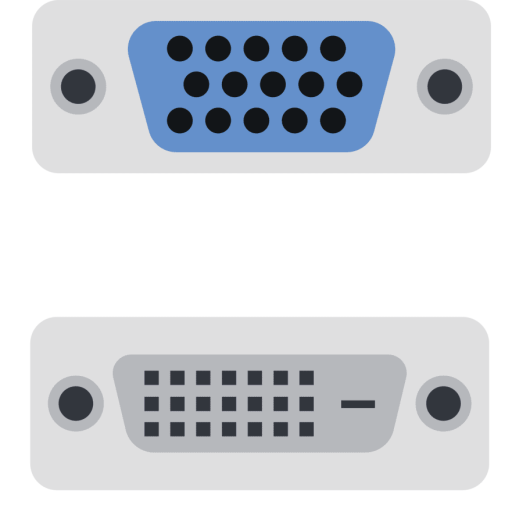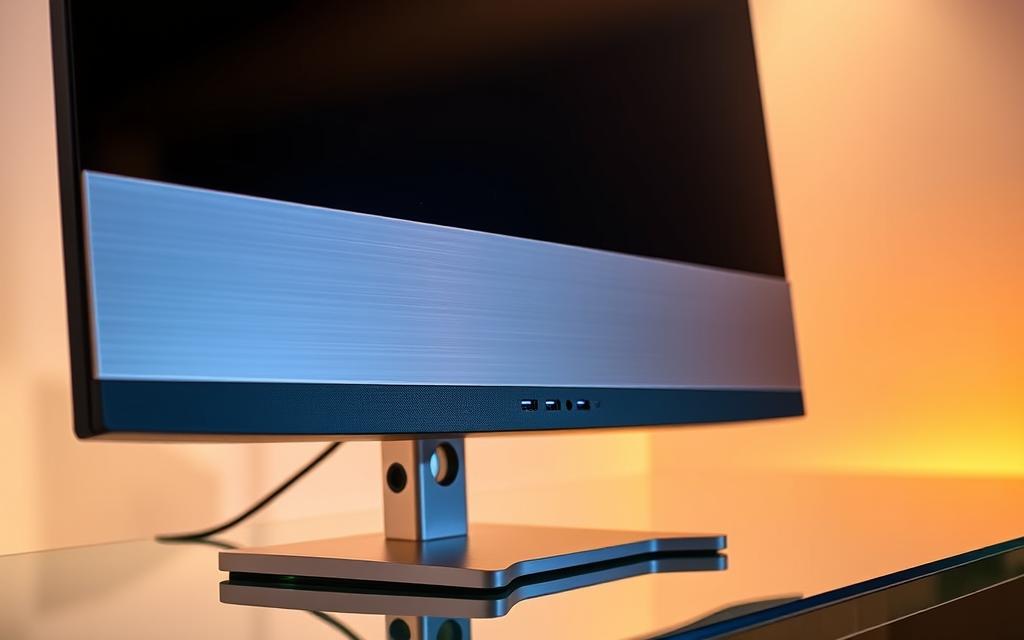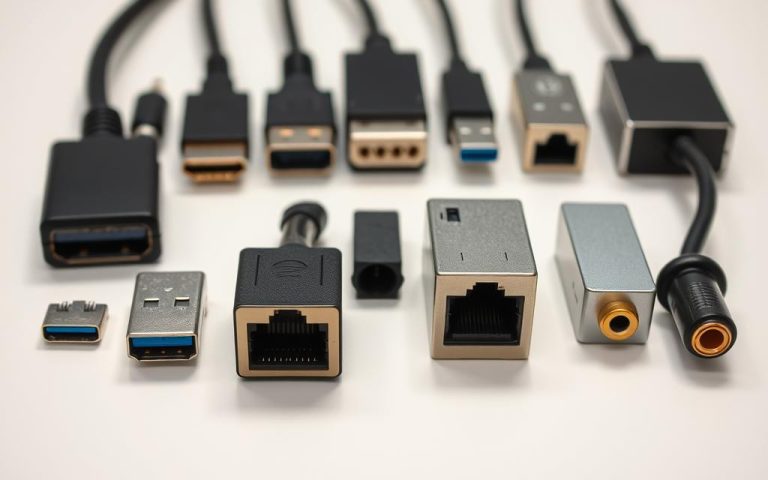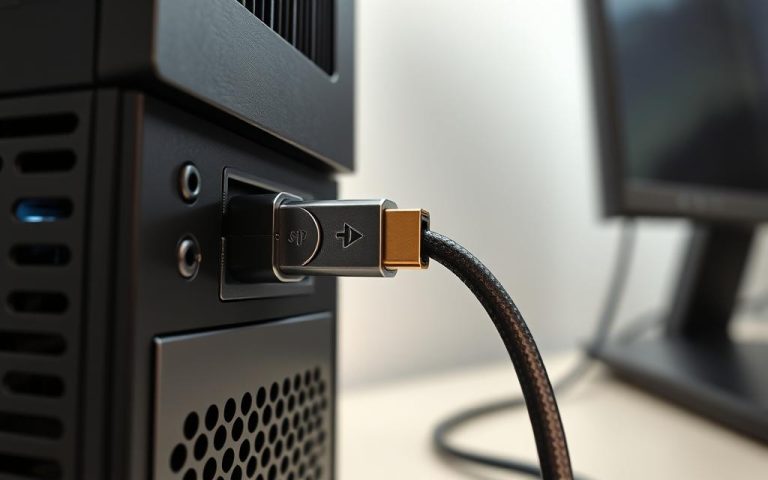Best PC Monitors with Extra USB Ports for 2025
In 2025, the workspace is transforming with the advent of modern monitors equipped with extra USB ports. These advanced displays serve as versatile hubs, allowing users to connect peripherals directly to the screen rather than their laptop.
This integration eliminates cable clutter, providing convenient access to USB devices such as keyboards, mice, and external storage. With various categories of monitors available across premium, mid-range, and budget options, selecting the right model can be challenging.
Our comprehensive guide will explore the benefits of USB port integration in monitors and help you understand how to choose the best display for your specific needs, ensuring high quality and enhanced video performance.
Why Choose a PC Monitor with USB Ports
A PC monitor equipped with USB ports offers a multitude of benefits for productivity and organisation. By integrating USB ports, these monitors transform into central connectivity hubs, simplifying your workspace.
Enhanced Connectivity and Workspace Organisation
Modern monitors with integrated USB ports reduce cable clutter and create a more organised workspace. You can connect peripherals like keyboards, mice, and external drives directly to the monitor, rather than your computer, simplifying your setup. This leads to improved productivity and a more professional appearance for your home office or business environment.
Power Delivery and Device Charging Capabilities
Many monitors with USB-C ports offer power delivery capabilities up to 100W, enabling you to charge your laptop and other devices through a single cable connection. This power delivery solution eliminates the need for separate power adapters, reducing desk clutter while maintaining full functionality.
Understanding USB Port Types in Modern Monitors
Understanding the different types of USB ports on modern monitors is crucial for maximising their functionality. Modern monitors incorporate various USB port types, each offering different capabilities and connection options for your devices.
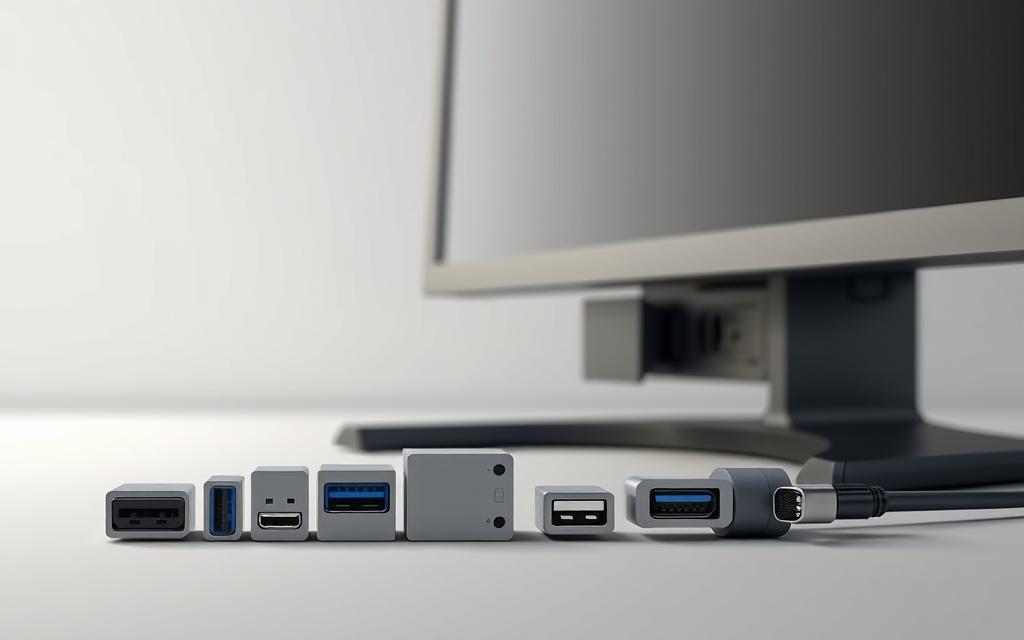
USB-A vs USB-C Ports: Key Differences
The most common USB port types found on monitors are USB-A and USB-C. USB-A ports are the traditional rectangular shape and remain common on many monitors, providing compatibility with older peripherals and devices while typically supporting USB 3.0 or 3.2 speeds. In contrast, USB-C ports represent the newer standard, featuring a smaller, reversible connector that can handle multiple protocols simultaneously, including video, data, and power.
- USB-A ports are ideal for connecting older devices or peripherals that do not support USB-C.
- USB-C ports offer greater versatility, supporting multiple protocols and faster data transfer speeds.
USB-C with Power Delivery and DisplayPort Alt Mode
Many premium monitors now feature USB-C with Power Delivery, capable of supplying up to 100W of power to connected laptops and other devices while simultaneously transferring data and video signals. Additionally, DisplayPort Alt Mode allows USB-C ports to carry DisplayPort video signals, enabling a single cable to handle both display output and USB hub functionality.
This functionality simplifies the connection process, reducing cable clutter and enhancing the overall user experience.
USB Hub Functionality in Monitors
Monitors with built-in USB hubs typically offer 3-5 downstream ports, allowing you to connect multiple peripherals through your display rather than directly to your computer. This feature is particularly useful for maintaining a tidy workspace and improving connectivity.
By understanding the different USB port types and their capabilities, you can make an informed decision when selecting a monitor that meets your specific needs.
Benefits of USB-C Docking Monitors
USB-C docking monitors are revolutionising the way we work by providing a single cable solution for connectivity, power, and display. This innovative technology simplifies workspace setups, making it easier for professionals to stay organised and focused.
Single Cable Connection Solutions
The single-cable solution offered by USB-C docking monitors eliminates the need for multiple cables, reducing clutter and increasing productivity. With just one cable, users can connect their laptop to the monitor, power source, and peripherals, streamlining their workflow. Modern USB-C monitors can deliver up to 100W of power to laptops, handling video signals and data transfer simultaneously. This functionality is particularly beneficial for creative professionals who require direct connections to specialised equipment.
For instance, Philips USB-C docking monitors allow users to extend their laptop’s battery life without needing extra power adapters. By connecting all devices directly to the monitor, users can easily set up daisy chaining with their laptop and charge their phone, keeping their workspace neat and tidy.
Daisy Chaining and Extended Display Options
Many USB-C monitors support daisy chaining, enabling users to connect multiple displays in series through a single port on their computer. This feature expands the visual workspace without requiring additional cables, making it ideal for professionals who need multiple screens for their work. The DisplayPort out functionality on premium USB-C monitors further enhances this capability, allowing for extended display configurations without complex cable management.
| Feature | Benefit |
|---|---|
| Single Cable Connection | Simplifies workspace, reduces clutter |
| Daisy Chaining | Expands visual workspace, enhances productivity |
| Power Delivery | Charges laptop, reduces need for separate power adapters |
As noted by industry experts, “The universal compatibility of USB-C makes these monitors future-proof investments that will work with upcoming computer models and peripherals.” This sentiment is echoed by the growing adoption of USB-C technology in modern workplaces.
“The future of display technology is undoubtedly tied to the advancement of USB-C connectivity, offering unparalleled flexibility and convenience.”
Top Premium PC Monitors with USB Ports
Premium PC monitors equipped with USB ports represent the pinnacle of display technology for professional environments, offering exceptional image quality and extensive connectivity options.
These high-end monitors are designed to meet the demands of creative professionals, providing features such as 4K resolution, wide colour gamut, and advanced USB-C connectivity with power delivery.
Dell UltraSharp U2723QE 4K USB-C Hub Monitor

Key Features
The Dell UltraSharp U2723QE features a 27-inch 4K IPS panel with a resolution of 3840 x 2160, offering outstanding colour accuracy with 100% sRGB coverage. It includes a comprehensive USB-C hub with 90W power delivery, multiple USB-A ports, Ethernet connectivity, and DisplayPort out for daisy chaining additional monitors.
The monitor’s IPS panel technology ensures consistent colours and contrast from all viewing angles, making it suitable for collaborative work environments and photo editing tasks. With a refresh rate of 60Hz and a 5ms response time, the U2723QE prioritises image quality and colour accuracy over gaming performance.
Pros and Cons
The Dell UltraSharp U2723QE offers excellent colour accuracy and a wide range of connectivity options, making it ideal for professional use. However, its 60Hz refresh rate may not be suitable for gaming enthusiasts.
Philips 279P1 27-inch 4K USB-C Docking Display
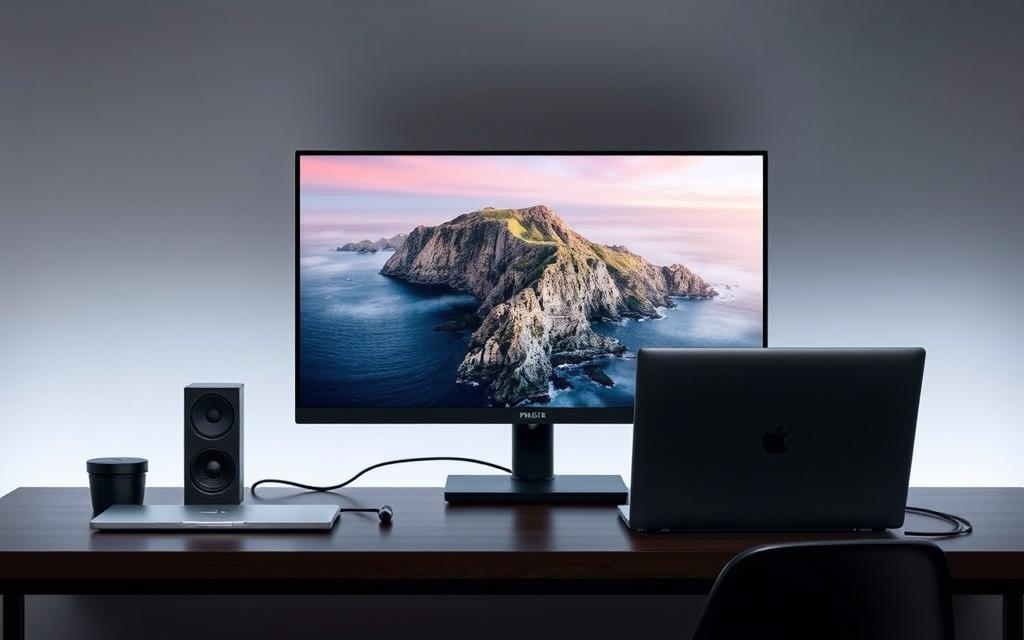
Key Features
The Philips 279P1 offers similar premium specifications with its 27-inch 4K IPS panel, but adds built-in speakers and a more adjustable stand for enhanced ergonomics. It features USB-C connectivity with power delivery, allowing laptop users to connect, power, and access peripherals through a single cable connection.
Both the Dell UltraSharp U2723QE and Philips 279P1 offer extensive ergonomic adjustments, including height, tilt, swivel, and pivot options, to accommodate various workspace configurations. The 16:9 aspect ratio provides a balanced viewing experience for both productivity tasks and media consumption.
Pros and Cons
The Philips 279P1 stands out with its built-in speakers and highly adjustable stand, enhancing its value for professionals. However, users may find the on-screen menu navigation somewhat complex.
Investing in a premium USB-equipped monitor like these models typically ranges from £400-£800, representing significant value for professionals who require colour accuracy and extensive connectivity.
Best Mid-Range PC Monitors with USB Ports
For professionals and home office users seeking a balance between performance and affordability, mid-range PC monitors with USB ports are an excellent choice. These monitors offer a range of features that enhance productivity and connectivity without the premium price tag.
Mid-range monitors with USB ports typically include a variety of connectivity options, such as USB-A, USB-C, DisplayPort, and HDMI, making it easier to connect multiple devices and peripherals. The inclusion of USB-C with Power Delivery (PD) allows for charging laptops and other devices, reducing clutter and increasing workspace organisation.
ViewSonic VG2455-2K USB-C Monitor
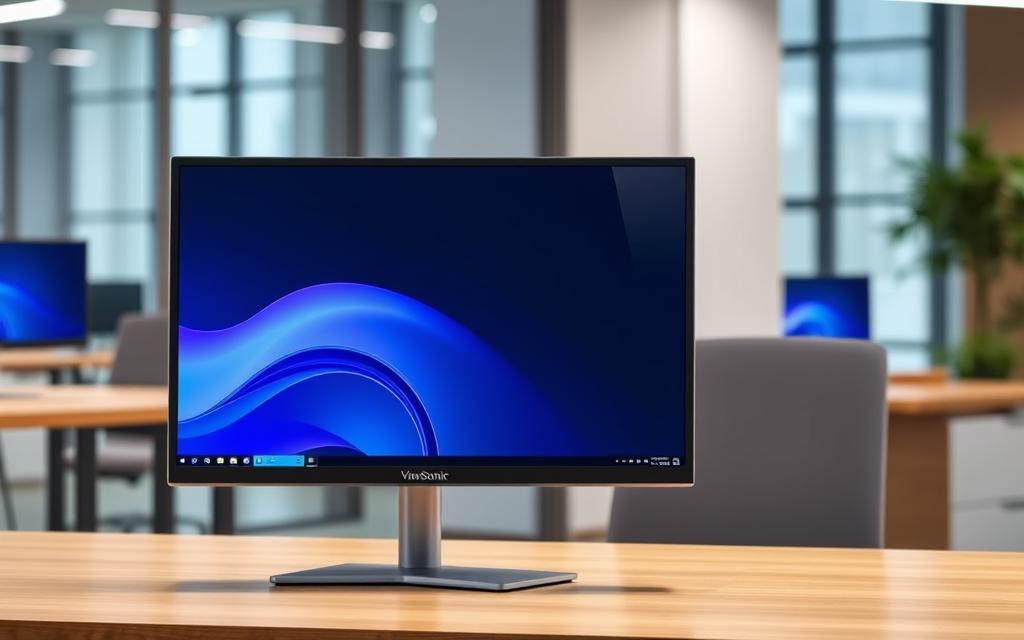
Key Features
The ViewSonic VG2455-2K features a 24-inch IPS panel with a 2560 x 1440 resolution, providing sharp text and detailed images ideal for productivity tasks. With USB-C connectivity and 60W power delivery, it can charge most ultraportable laptops while handling display and data signals.
The monitor boasts a 60Hz refresh rate and excellent colour accuracy with 99% sRGB coverage, making it suitable for office work, content creation, and general productivity. Its slim bezels and fully adjustable stand are perfect for multi-monitor setups.
Pros and Cons
Pros: Excellent colour accuracy, versatile connectivity options, and a fully adjustable stand.
Cons: Limited to a 60Hz refresh rate, which may not be ideal for gaming.
LG 27UP850-W 27-inch 4K USB-C Monitor
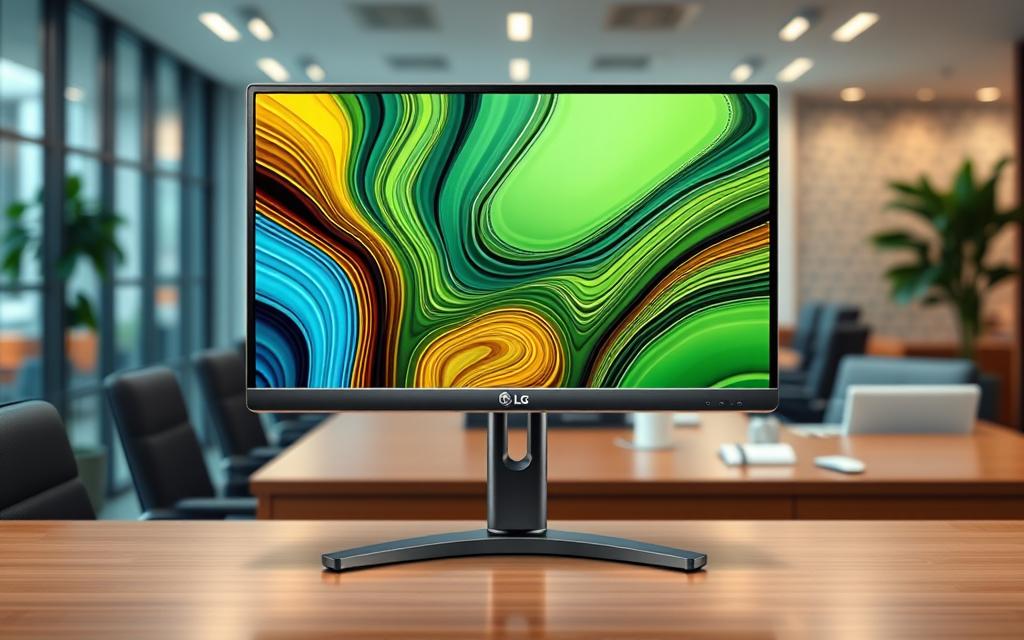
Key Features
The LG 27UP850-W offers a larger 27-inch screen with 4K resolution (3840 x 2160), providing exceptional detail for photo editing and video production. This monitor also features IPS panel technology, ensuring consistent colours and wide viewing angles.
With its USB-C connectivity and multiple ports, the LG 27UP850-W is designed for professionals who require a high level of detail and colour accuracy in their work.
Pros and Cons
Pros: Exceptional 4K resolution, wide viewing angles, and versatile connectivity.
Cons: Higher price point compared to some mid-range options, though justified by its high-resolution display.
Budget-Friendly PC Monitors with USB Ports
The market for budget-friendly PC monitors with USB ports has expanded, offering users a range of affordable options with essential connectivity features. This development is particularly beneficial for those looking to upgrade their computing experience without incurring significant costs.
ASUS ProArt Display PA278CV
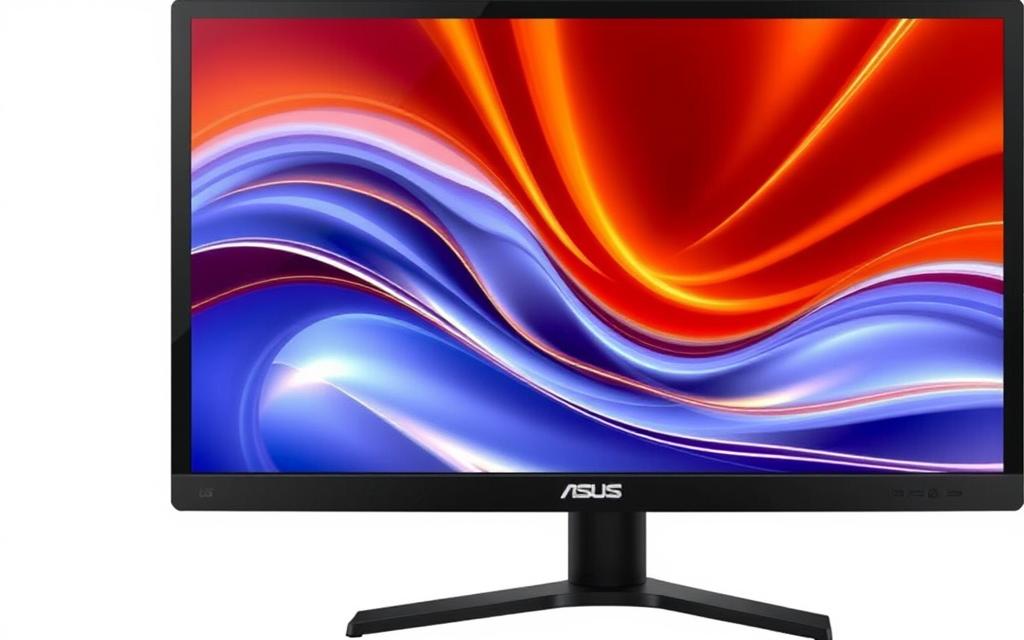
The ASUS ProArt Display PA278CV is a standout option in the budget-friendly category, boasting a 27-inch IPS panel with a 2560 x 1440 resolution and professional colour accuracy, including 100% sRGB and Rec.709 coverage. Its USB-C connectivity with 65W power delivery and four USB 3.0 ports make it an excellent choice for users seeking a versatile display solution.
Key Features
The PA278CV features a 75Hz refresh rate, slightly smoother than standard 60Hz displays, benefiting both productivity tasks and casual gaming. Its 16:9 aspect ratio and wide viewing angles make it suitable for collaborative environments and content consumption.
Pros and Cons
Pros include its exceptional colour accuracy, versatile connectivity options, and ergonomic stand allowing for height, tilt, swivel, and pivot adjustments. However, it may lack some advanced features found in more expensive models, such as higher refresh rates or HDR support.
Samsung S27A600U 27-inch USB-C Monitor
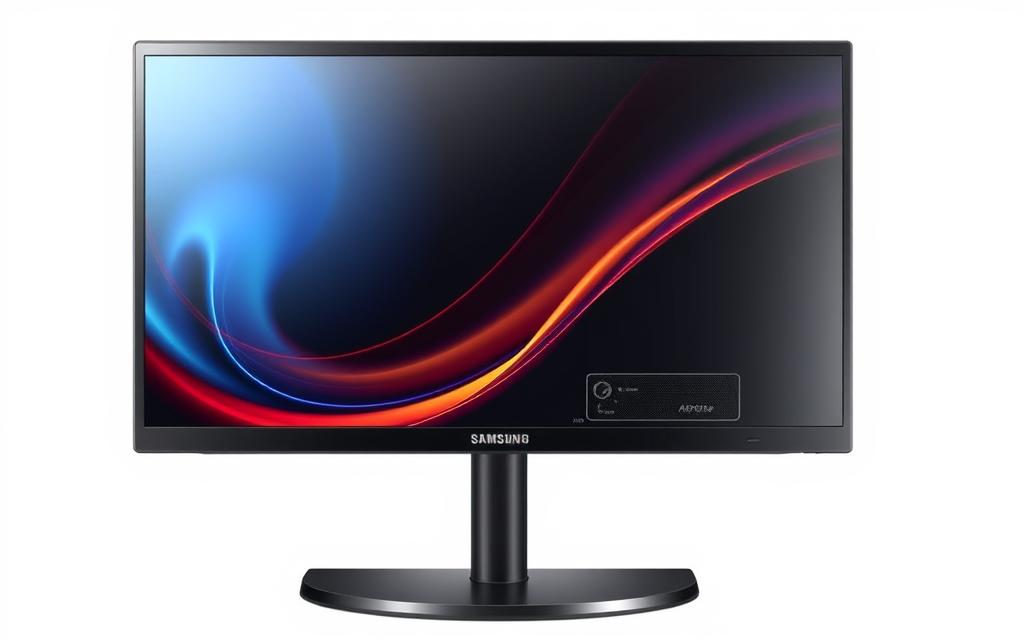
The Samsung S27A600U offers a 27-inch IPS panel with 1920 x 1080 resolution, USB-C connectivity with 65W power delivery, and built-in speakers, all at a budget-friendly price point. It’s an excellent option for users seeking a straightforward, affordable display solution with essential features.
Key Features
This monitor incorporates eye-care technologies, including blue light filters and flicker-free backlighting, to reduce eye strain during extended use. Its simple design and straightforward functionality make it accessible to a wide range of users.
Pros and Cons
Pros include its affordability, USB-C connectivity, and built-in speakers. However, its resolution is lower than some other options, and it may not offer the same level of colour accuracy as more premium models.
For more budget-friendly monitor options, you can explore further on PCMag’s Best Budget Monitors page.
Gaming Monitors with USB Hub Functionality
Gaming monitors with integrated USB hubs are revolutionising the way gamers connect their peripherals, offering a more streamlined and efficient gaming setup.
Asus ROG Strix XG27AQM
The Asus ROG Strix XG27AQM is a standout gaming monitor, featuring a 27-inch IPS panel with a 2560 x 1440 resolution and an impressive 270Hz refresh rate. This monitor is designed to deliver ultra-smooth motion for competitive gaming.
Key Features for Gamers
This gaming monitor includes multiple USB 3.2 ports for easy access to connect peripherals, external storage, or charging cables. With a 1ms response time, NVIDIA G-Sync compatibility, and HDR support, the XG27AQM delivers exceptional image quality while its built-in USB hub simplifies cable management.
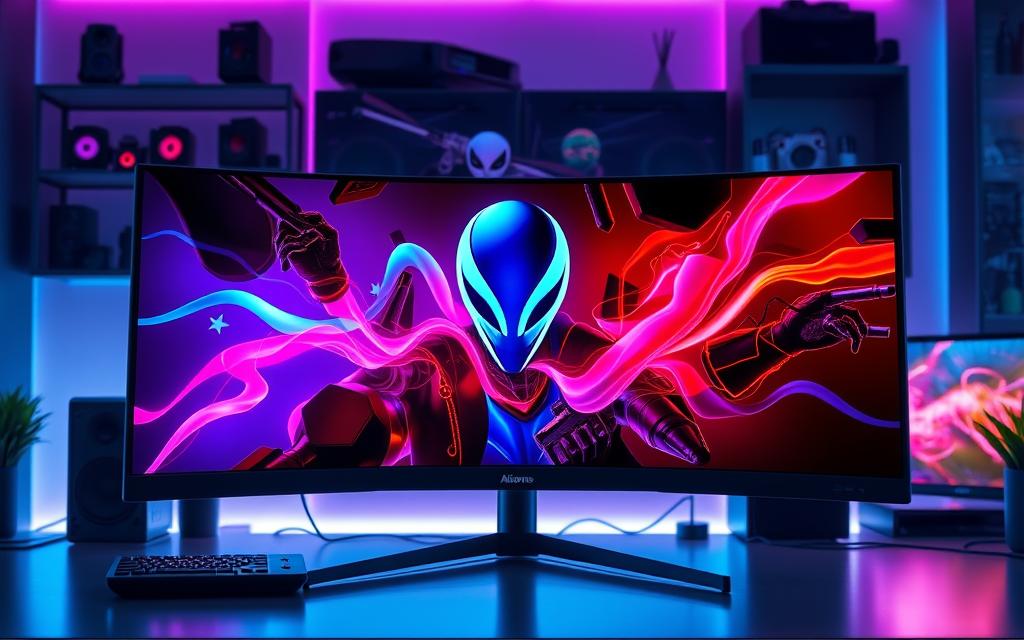
Alienware AW3423DW QD-OLED
The Alienware AW3423DW represents a premium gaming option with its 34-inch curved QD-OLED panel, combining the perfect blacks and infinite contrast of OLED technology with quantum dot colour enhancement.
Key Features for Gamers
This Alienware model features a 175Hz refresh rate, 0.1ms response time, and G-Sync Ultimate certification, alongside a comprehensive USB hub for connecting gaming peripherals. The integration of USB hubs in gaming monitors is particularly valuable for users of gaming laptops, providing easy access to peripherals when docking at a desk for more immersive gaming sessions.
Gaming monitors with USB hub functionality typically include 3-4 USB ports, often with at least one fast-charging port specifically designed for mobile devices or wireless peripheral charging. Many gaming-focused USB hub monitors also include additional gamer-centric features such as built-in headphone stands, RGB lighting systems, and cable management solutions to maintain a clean aesthetic.
Portable Monitors with USB-C Connectivity
For professionals constantly on the move, portable monitors with USB-C are a game-changer. These lightweight displays draw both power and video signal through a single cable, revolutionising mobile productivity.
Lenovo ThinkVision M14t Gen2
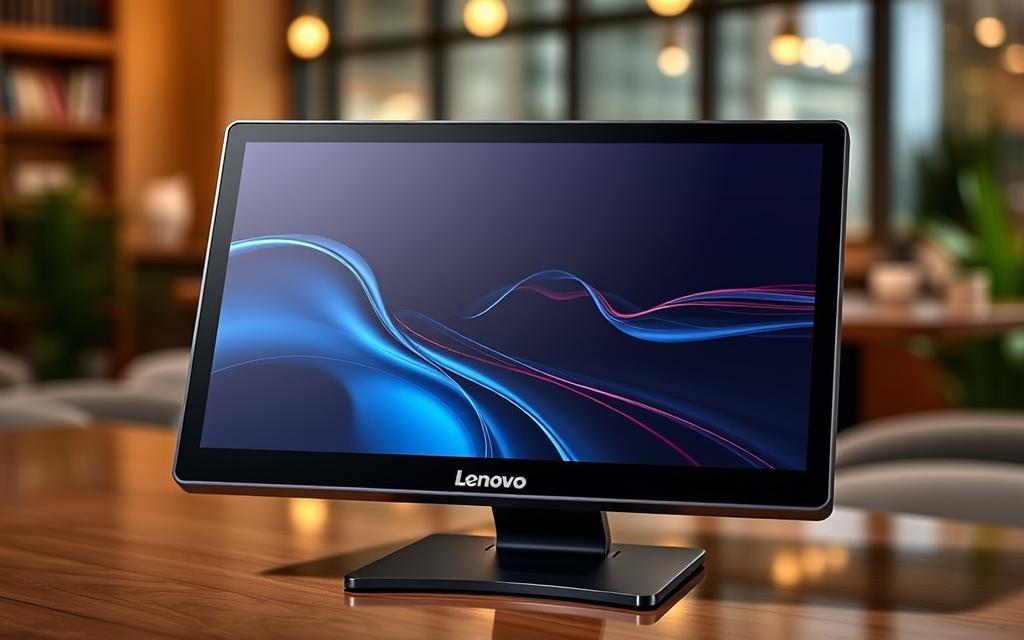
The Lenovo ThinkVision M14t Gen2 is a touch-enabled portable monitor featuring a sturdy hinged stand. It packs a high-resolution IPS panel with great contrast and excellent colour coverage. The 16:10 aspect ratio provides more vertical screen space than traditional 16:9 widescreen panels.
Key Features
- 14-inch IPS panel with 2240 x 1400 resolution
- Touch functionality for intuitive interaction
- Sturdy hinged stand for flexible positioning
- USB-C connectivity for compatibility with modern laptops
- Excellent contrast ratio (1500:1) and full sRGB colour coverage
ViewSonic VX1655-4K-OLED
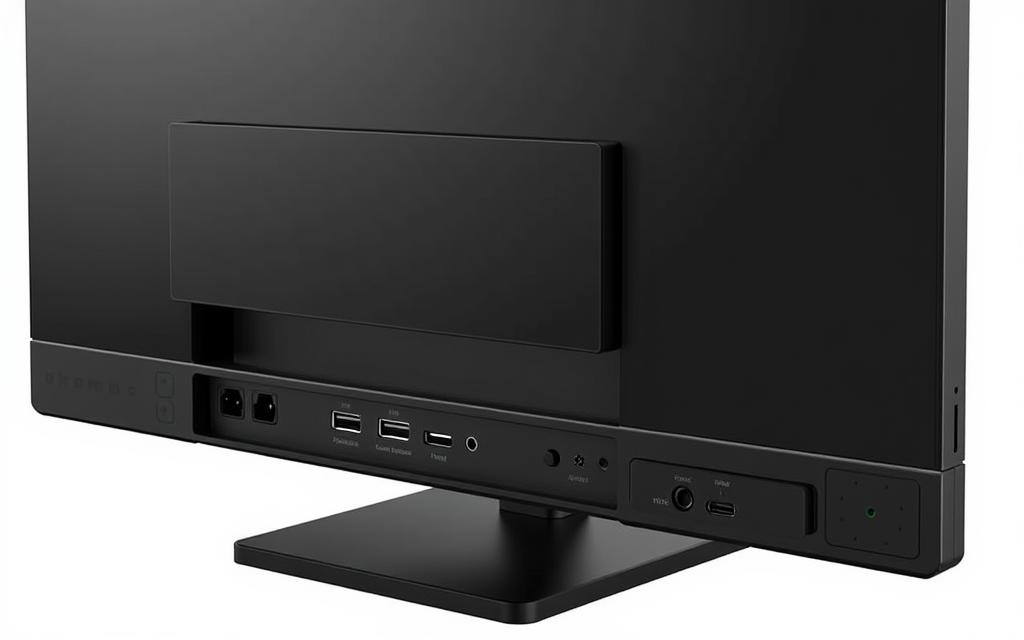
The ViewSonic VX1655-4K-OLED represents the premium end of portable displays with its 15.6-inch 4K OLED panel. It delivers perfect blacks, infinite contrast, and exceptional colour accuracy, making it ideal for critical creative work.
Key Features
- 15.6-inch 4K OLED panel for exceptional image quality
- Dual USB-C ports with power delivery
- Compatibility with modern laptops and tablets
- Perfect blacks and infinite contrast ratio
- Exceptional colour accuracy for professional-grade work
Portable USB-C monitors typically range from 13.3 to 17.3 inches, with 1920 x 1080 being the most common resolution. However, premium models now offer 1440p and 4K options, catering to diverse needs and preferences.
How to Choose the Right PC Monitor with USB Ports
Choosing the right PC monitor with USB ports requires a careful assessment of your specific needs and preferences. With numerous options available, it’s essential to evaluate both display specifications and connectivity features to ensure the monitor meets your requirements.
Essential Specifications to Consider
When selecting a PC monitor, several key specifications should be considered. These include screen size, typically ranging from 24 to 32 inches for desktop use, resolution (1080p, 1440p, or 4K), panel type (IPS, VA, or TN), and refresh rate (60Hz for general use, 144Hz+ for gaming). IPS panels are known for their excellent colour accuracy and viewing angles, making them ideal for professional work, while VA panels offer better contrast for entertainment purposes.
| Panel Type | Colour Accuracy | Viewing Angles | Contrast Ratio |
|---|---|---|---|
| IPS | Excellent | Wide | Good |
| VA | Good | Moderate | High |
| TN | Fair | Narrow | Low |
Matching USB Ports to Your Device Ecosystem
Assessing your device ecosystem is crucial to determine the appropriate USB port configuration. For legacy devices and peripherals, USB-A ports are suitable, while USB-C ports are ideal for modern laptops and tablets. For high-performance workstations, consider monitors with Thunderbolt connectivity.
Power Delivery Requirements
For laptop users, power delivery capabilities are a critical factor. Ensure the monitor provides sufficient wattage (typically 60-100W) to charge your laptop model through USB-C. This feature can significantly enhance productivity by reducing cable clutter and the need for separate chargers.
By carefully evaluating these factors, you can select a PC monitor with USB ports that not only meets your display needs but also enhances your overall productivity and workspace organisation.
Conclusion
The integration of USB ports in PC monitors represents a significant advancement in workspace efficiency, combining high-quality displays with practical connectivity solutions.
These versatile products not only save valuable desk space by eliminating the need for separate USB hubs and docking stations but also reduce cable clutter, creating a cleaner and more professional environment.
USB-C monitors, in particular, offer exceptional convenience through single-cable connections that handle video, data, and power simultaneously—a great choice for laptop users seeking simplified setups.
Whether you’re a casual user, business professional, creative specialist, or dedicated gaming enthusiast, there’s a USB-equipped monitor that represents a great choice for your specific needs and budget, enhancing productivity and comfort in your work or gaming experience.
FAQ
What is the ideal screen size for a monitor with USB-C connectivity?
The ideal screen size depends on your specific needs, but a 27-inch display is a popular choice, offering a great balance between screen real estate and desk space.
Can I use a USB-C monitor with a laptop that only has USB-A ports?
Yes, you can use a USB-C monitor with a USB-A laptop, but you’ll need a USB-A to USB-C adapter or a separate USB-C hub to connect the monitor.
What is the difference between a USB-C hub and a USB-C docking station?
A USB-C hub typically adds multiple USB ports to a single USB-C connection, while a USB-C docking station often includes additional features like DisplayPort, Ethernet, and power delivery.
Are IPS panels better than OLED panels for photo editing?
IPS panels offer excellent colour accuracy, while OLED panels provide superior contrast and black levels. For photo editing, IPS panels are often preferred, but OLED panels can also be a great choice.
Can a curved monitor improve my gaming experience?
A curved monitor can enhance immersion and provide a more engaging gaming experience, especially for games with a wide field of view.
What is the benefit of a high refresh rate in a gaming monitor?
A high refresh rate, such as 144Hz or 240Hz, can significantly reduce screen tearing and provide a smoother gaming experience.
How important is power delivery when choosing a USB-C monitor?
Power delivery is crucial if you plan to use your USB-C monitor to charge your laptop or other devices. Look for a monitor with a high power delivery rating, such as 85W or 100W.
Can I daisy chain multiple monitors using USB-C?
Yes, many modern USB-C monitors support daisy chaining, allowing you to connect multiple monitors to a single USB-C port on your laptop or PC.
